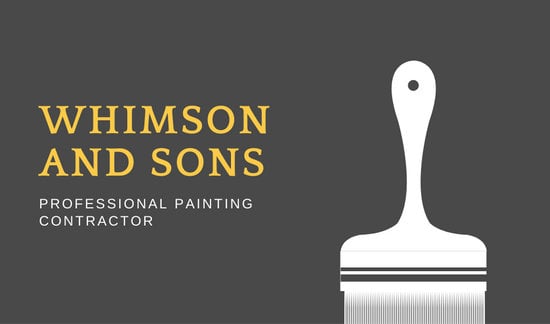Seasonal Consider Industrial Outside Painting: Trick Insights You Need To Recognize
Seasonal Consider Industrial Outside Painting: Trick Insights You Need To Recognize
Blog Article
Write-Up Author-Fox Browne
When you're preparing an industrial external painting task, seasonal aspects can make or break your results. You'll intend to take into consideration just how temperature level and humidity effect paint application and drying times. Choosing the appropriate season can guarantee your paint adheres correctly and lasts longer. Yet which periods are genuinely the most effective for this sort of job? Let' residential interior door out the key elements that can impact your job's success.
The Influence of Temperature Level on Paint Application
When you're intending a business exterior painting task, the temperature can dramatically impact how well the paint adheres and dries out.
Preferably, you wish to repaint when temperature levels vary between 50 ° F and 85 ° F. If it's also chilly, the paint may not treat properly, leading to issues like peeling off or fracturing.
On the other hand, if it's also hot, the paint can dry as well swiftly, stopping correct adhesion and causing an uneven coating.
You ought to additionally take into consideration the time of day; morning or late afternoon uses cooler temperatures, which can be a lot more positive.
Constantly check the maker's referrals for the specific paint you're using, as they often supply guidance on the optimal temperature level array for optimal results.
Moisture and Its Result on Drying Times
Temperature level isn't the only ecological element that influences your commercial outside painting task; moisture plays a considerable function too. High humidity levels can reduce drying out times significantly, affecting the total quality of your paint task.
When the air is saturated with moisture, the paint takes longer to cure, which can cause problems like inadequate adhesion and a greater danger of mildew development. If you're repainting on a specifically moist day, be planned for extended wait times between coats.
It's critical to keep track of local climate condition and strategy appropriately. Ideally, aim for moisture levels in between 40% and 70% for optimal drying.
Keeping these factors in mind guarantees your job remains on track and provides a long lasting coating.
Best Seasons for Commercial Exterior Painting Projects
What's the most effective season for your business outside paint jobs?
Spring and early fall are normally your best options. During stucco painter , temperature levels are light, and humidity degrees are typically reduced, producing perfect problems for paint application and drying.
Stay painters for hire of summer's intense heat, which can trigger paint to dry too swiftly, causing bad attachment and coating. Similarly, winter months's cool temperature levels can prevent correct drying out and treating, running the risk of the long life of your paint task.
Go for days with temperatures between 50 ° F and 85 ° F for optimum results. Keep in mind to examine the regional weather forecast for rainfall, as wet problems can destroy your project.
Preparation around these elements ensures your paint job runs smoothly and lasts longer.
Conclusion
In conclusion, preparing your business external paint projects around seasonal factors to consider can make a significant difference in the outcome. By scheduling work during the suitable temperatures and humidity levels, you'll guarantee better attachment and drying out times. Keep in mind to keep an eye on regional weather prediction and choose the correct time of year-- spring and very early loss are your best bets. Taking these steps will help you accomplish a durable and specialist surface that lasts.
